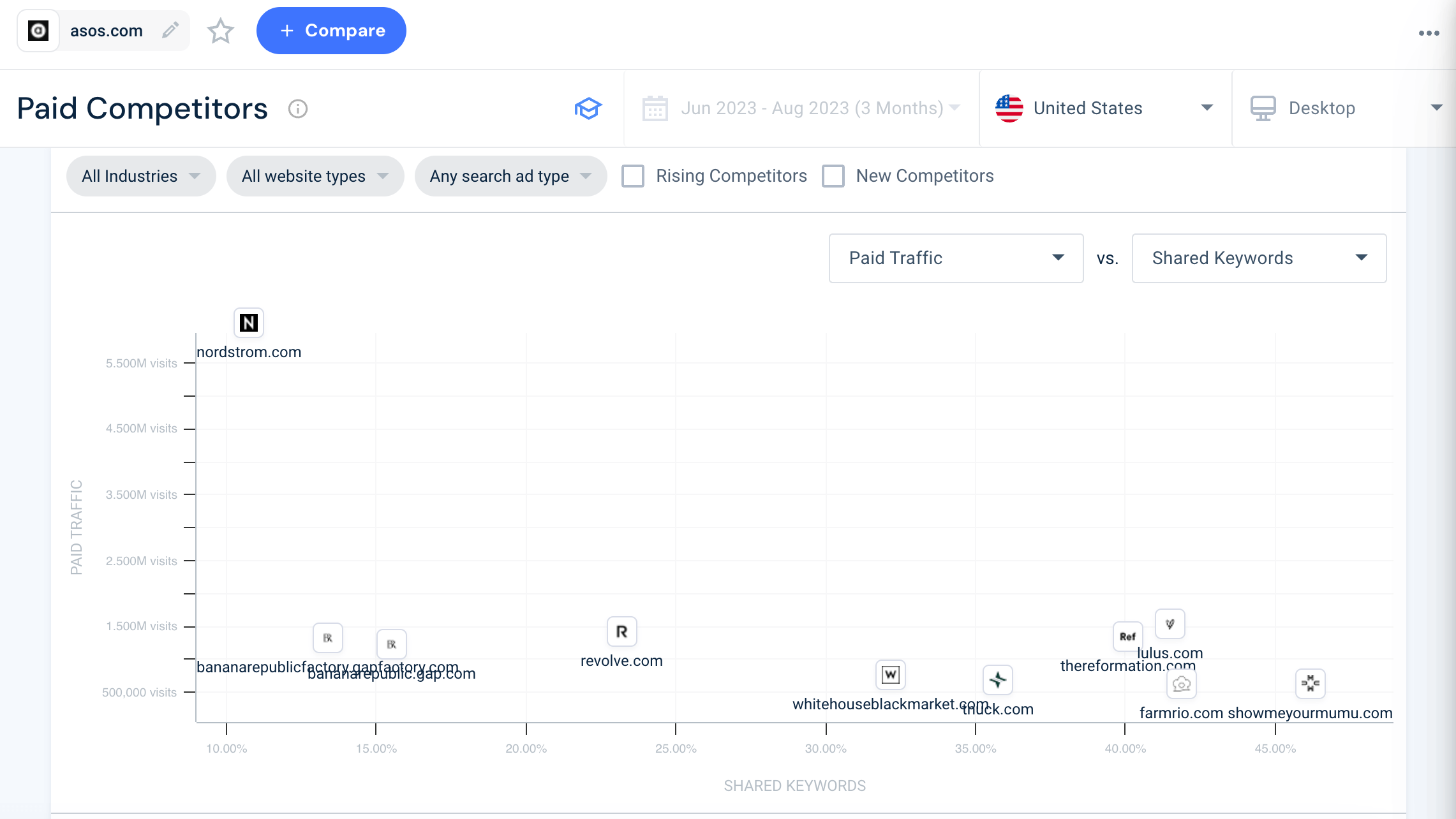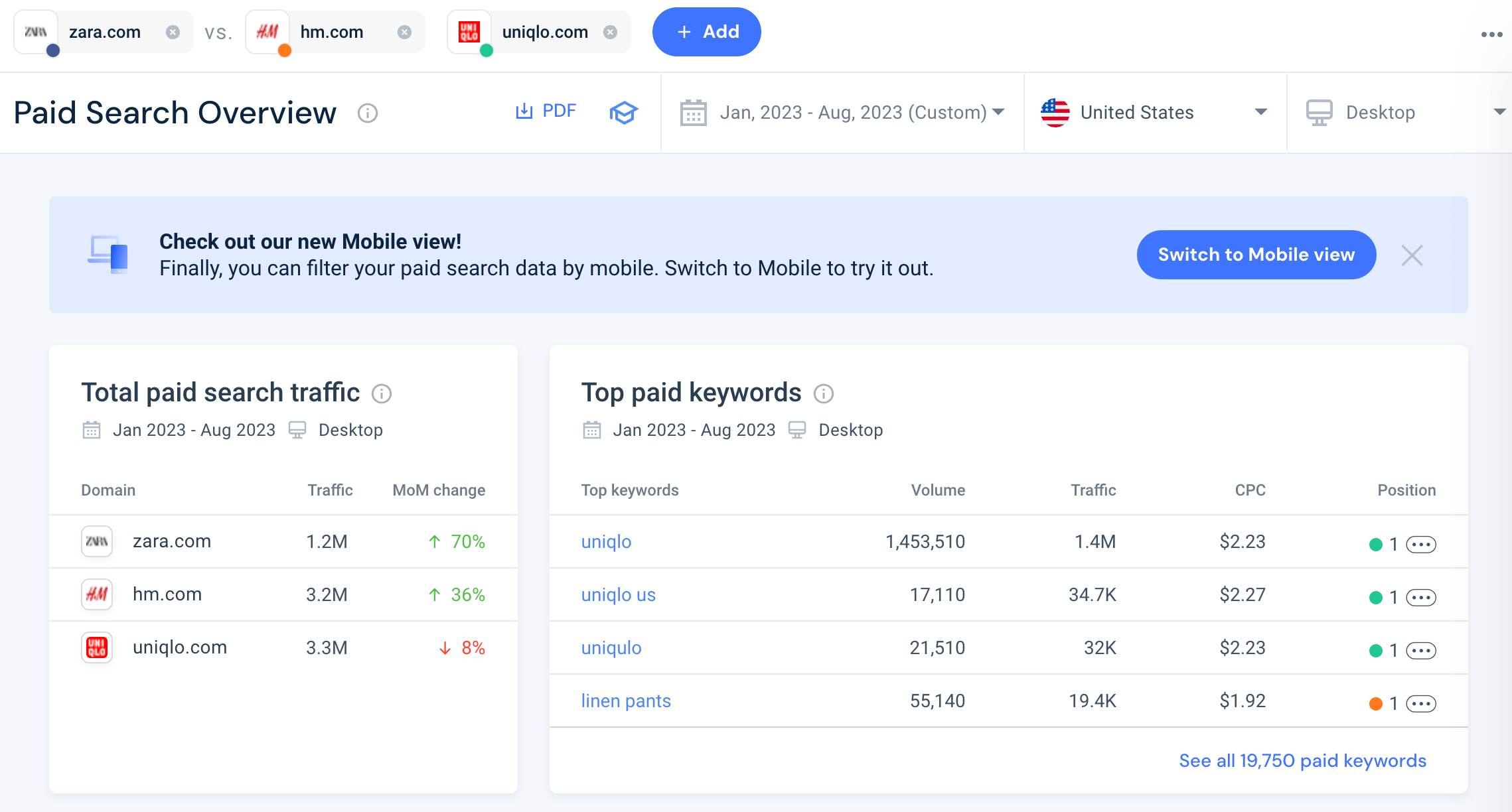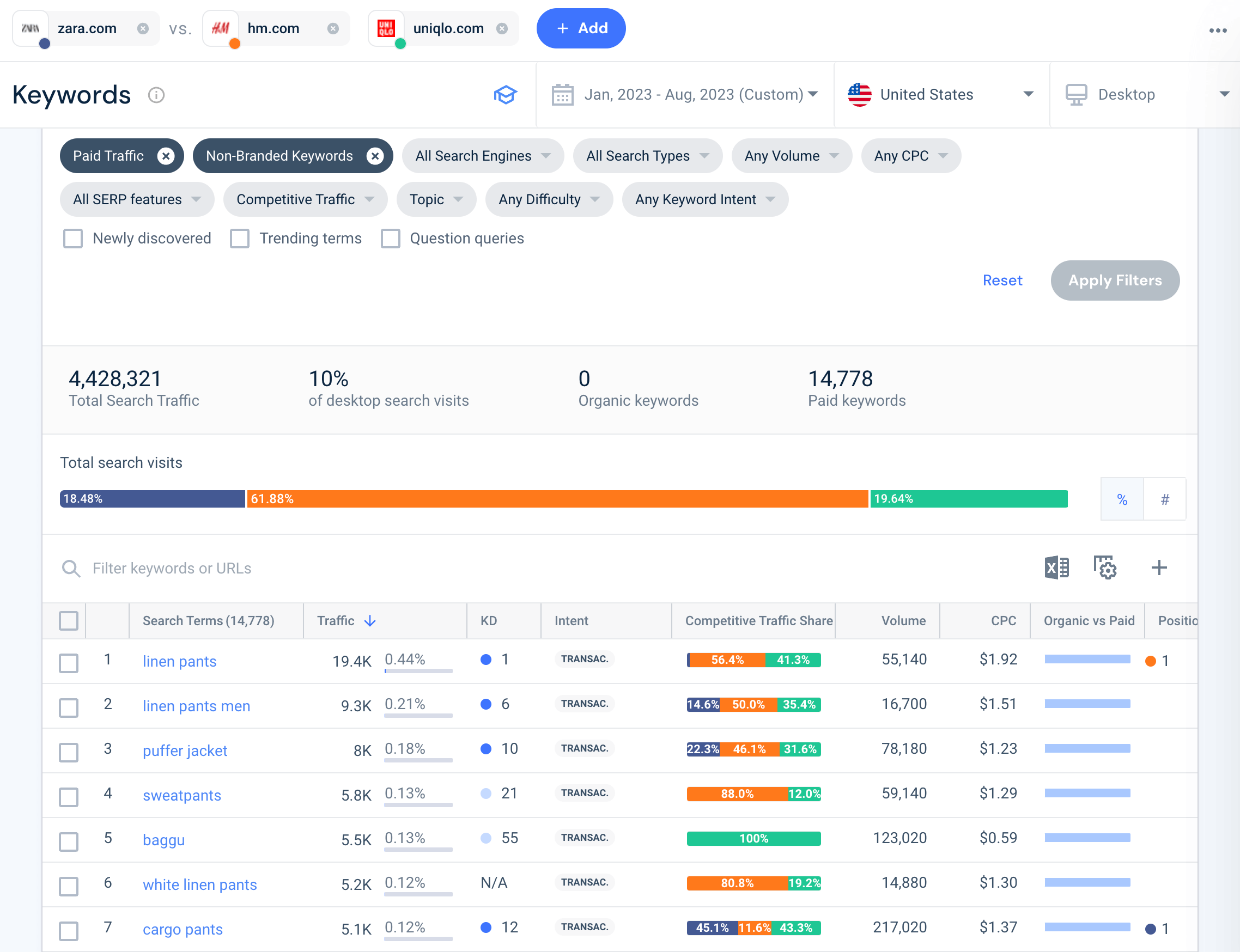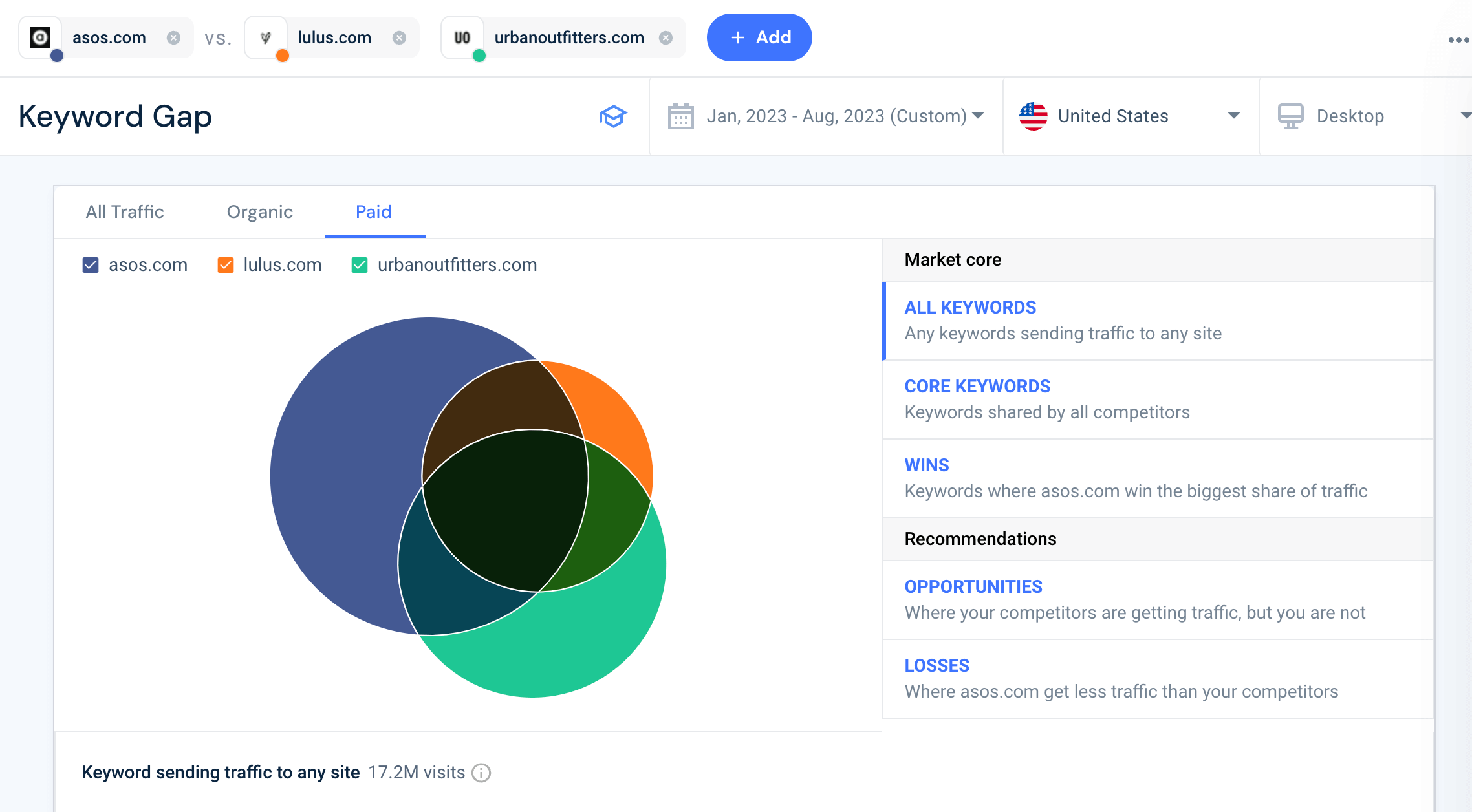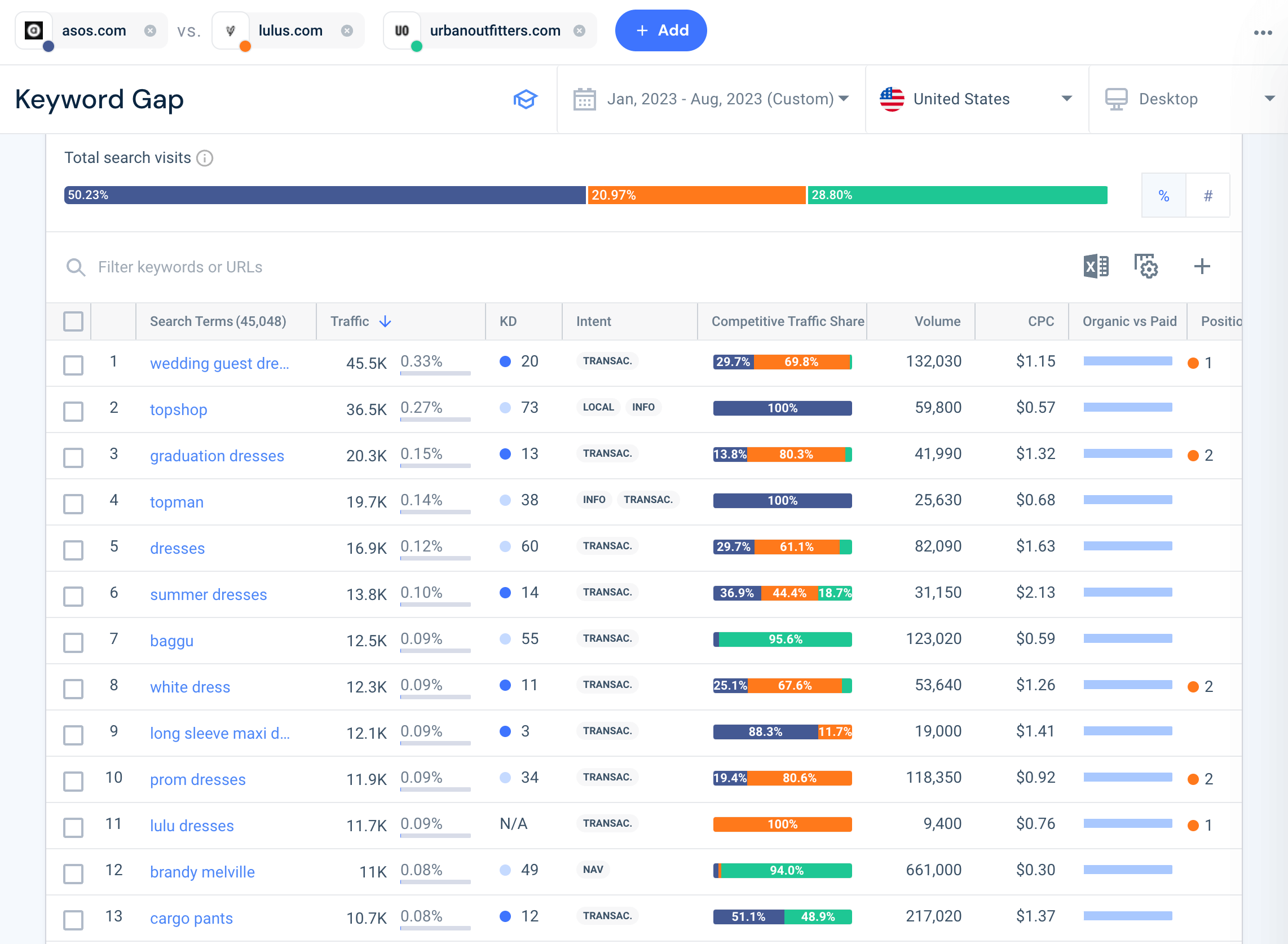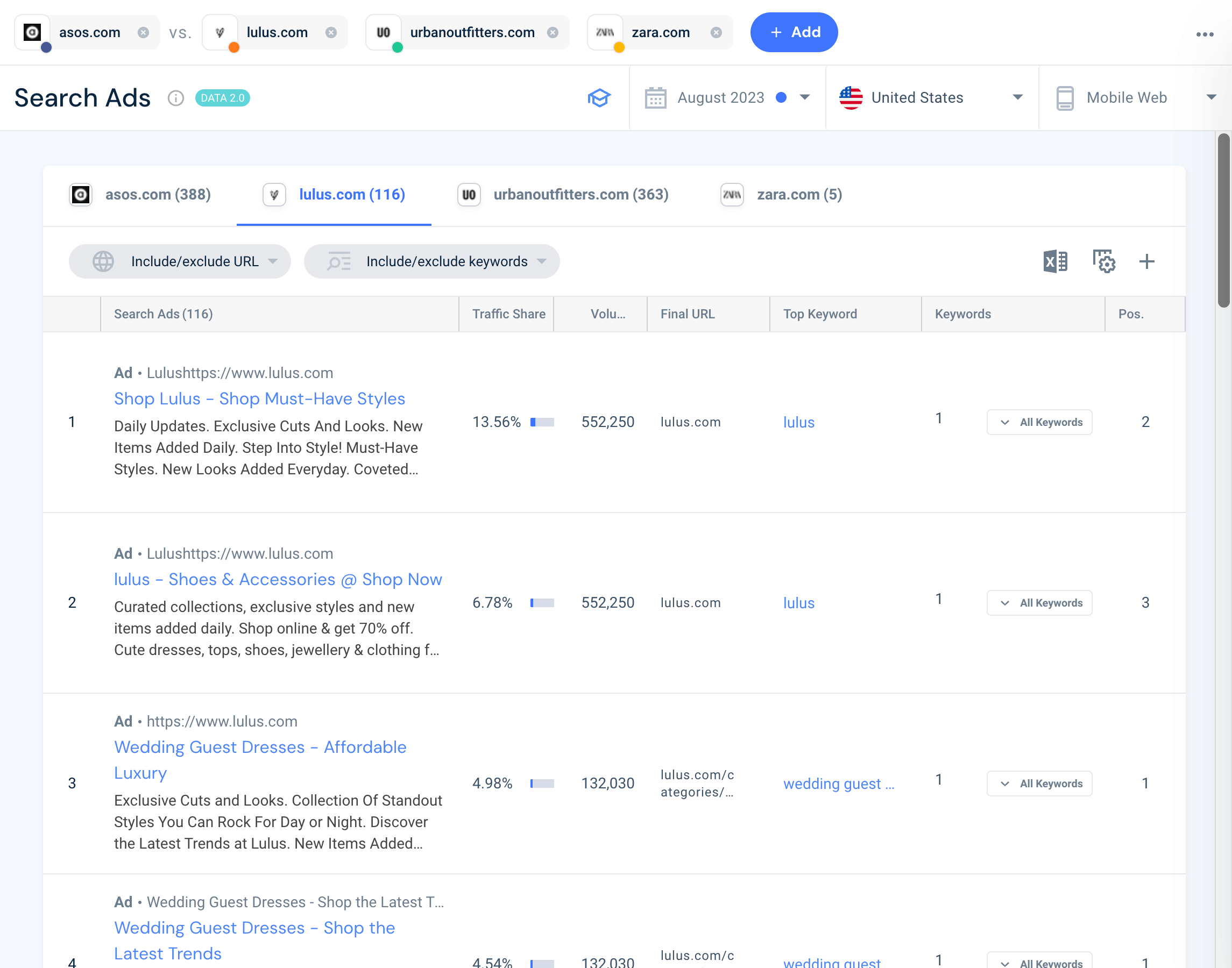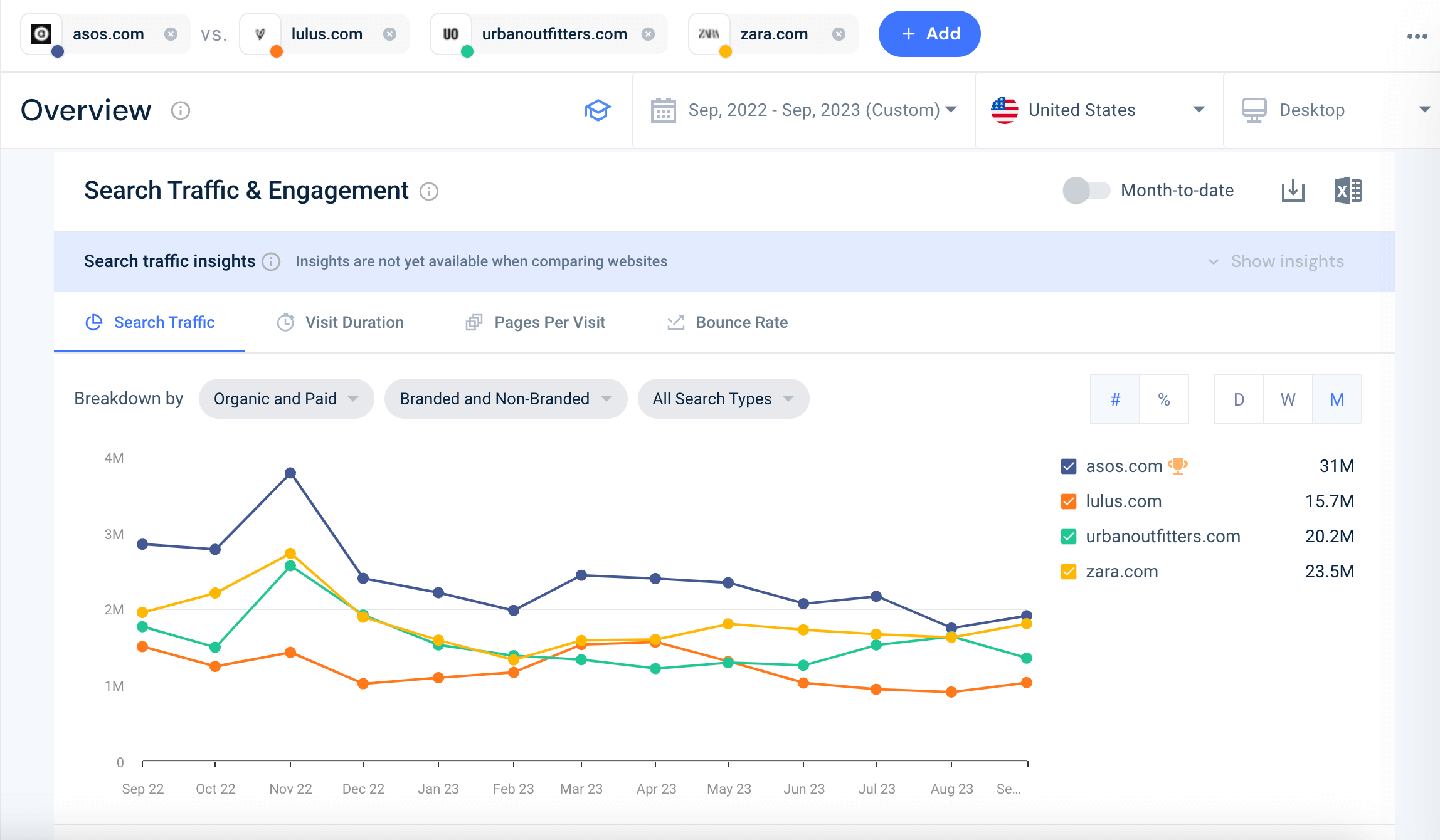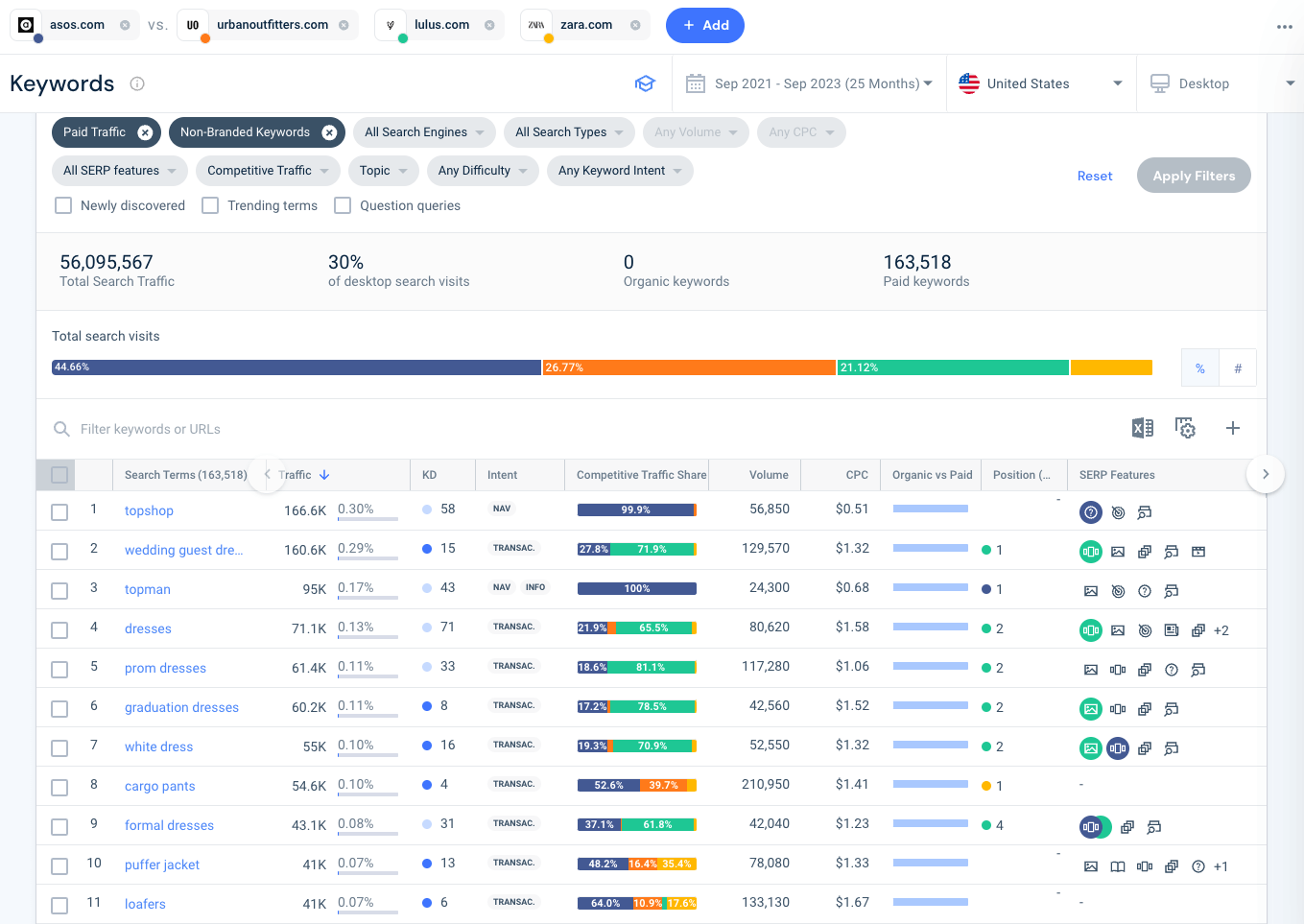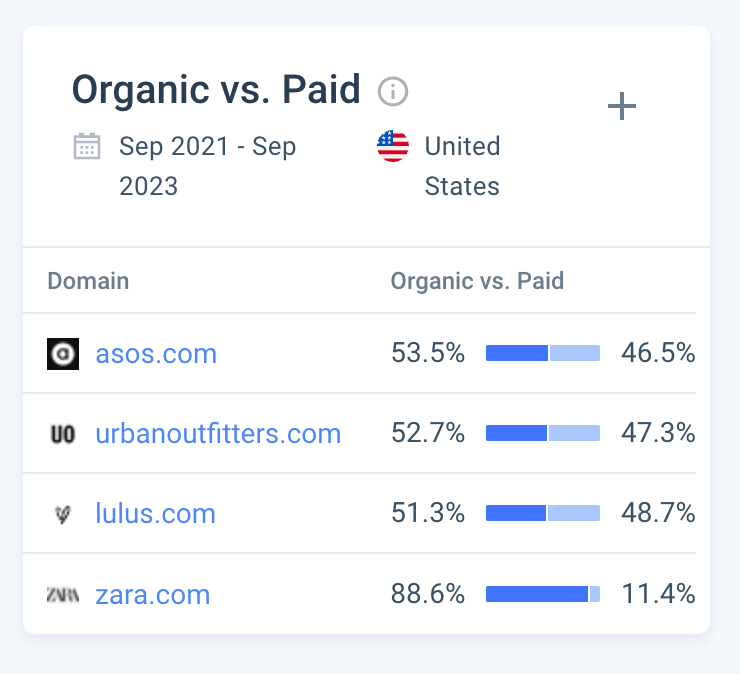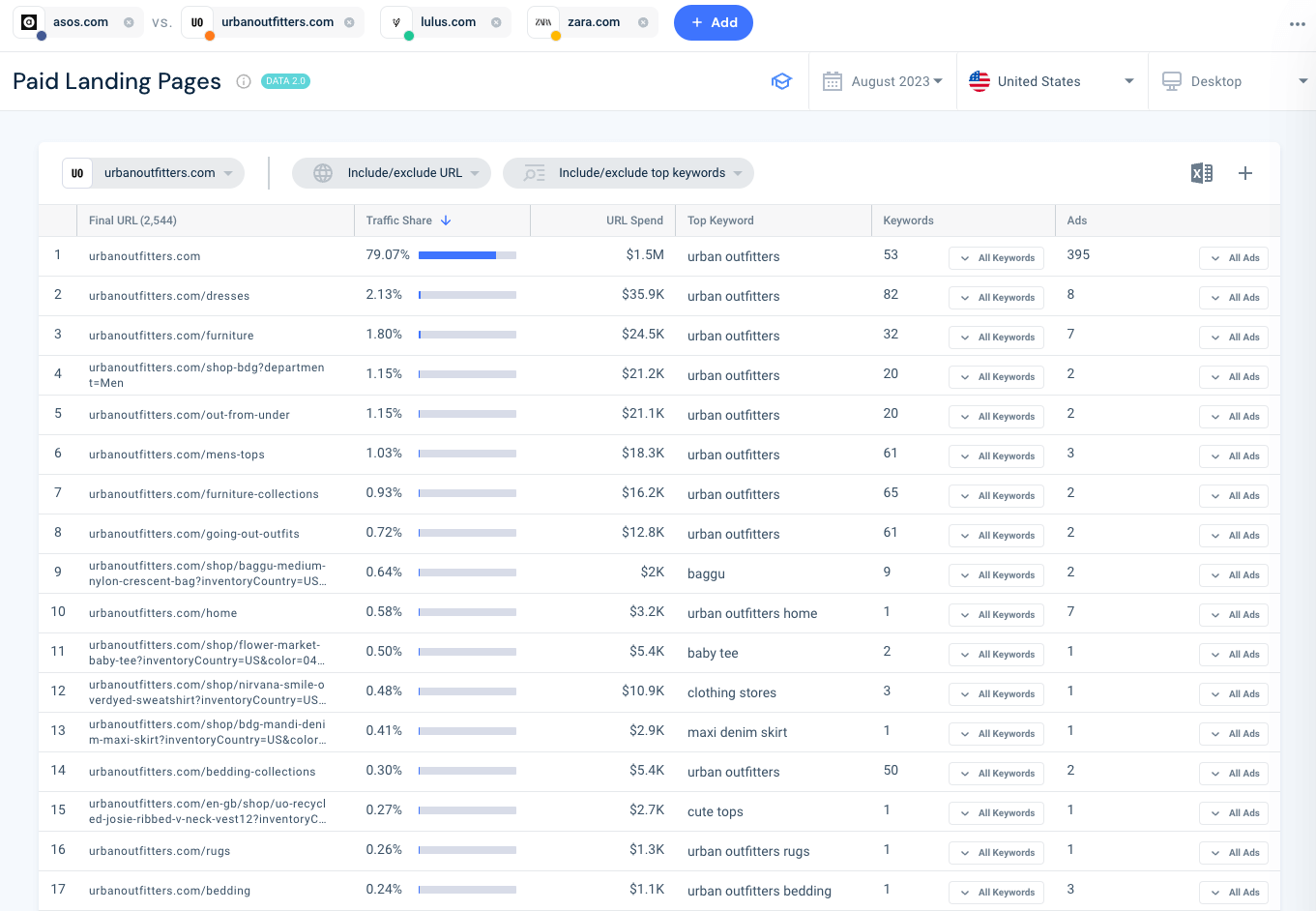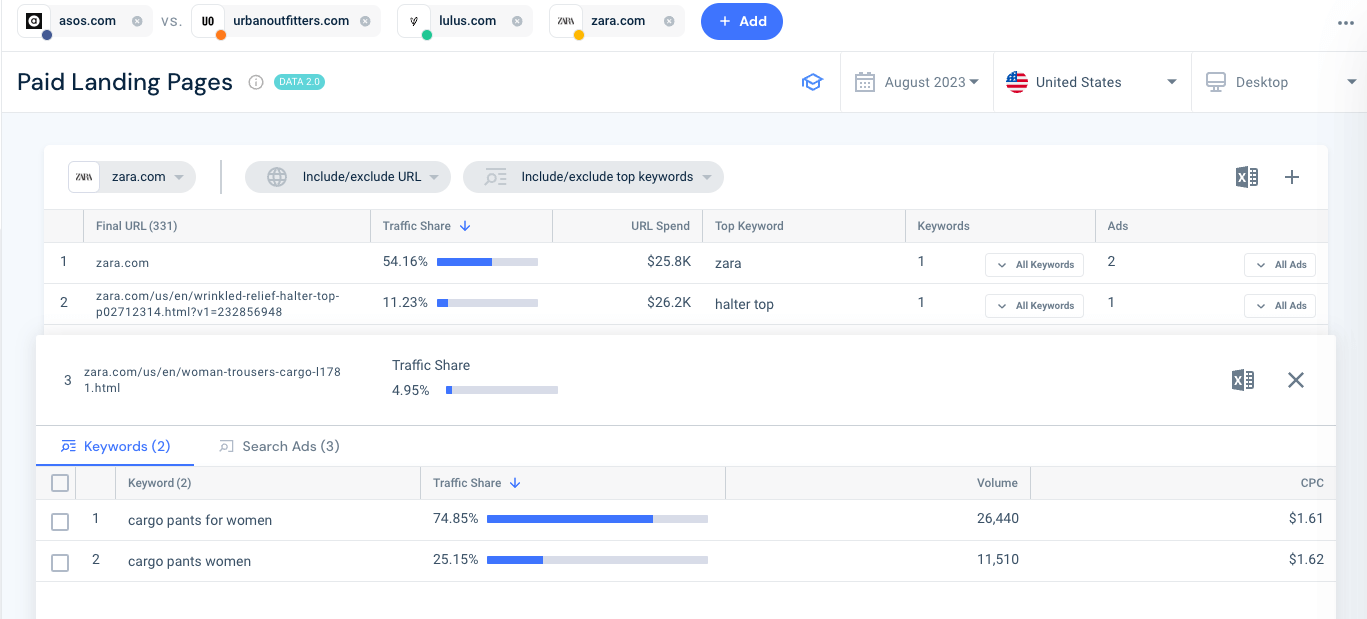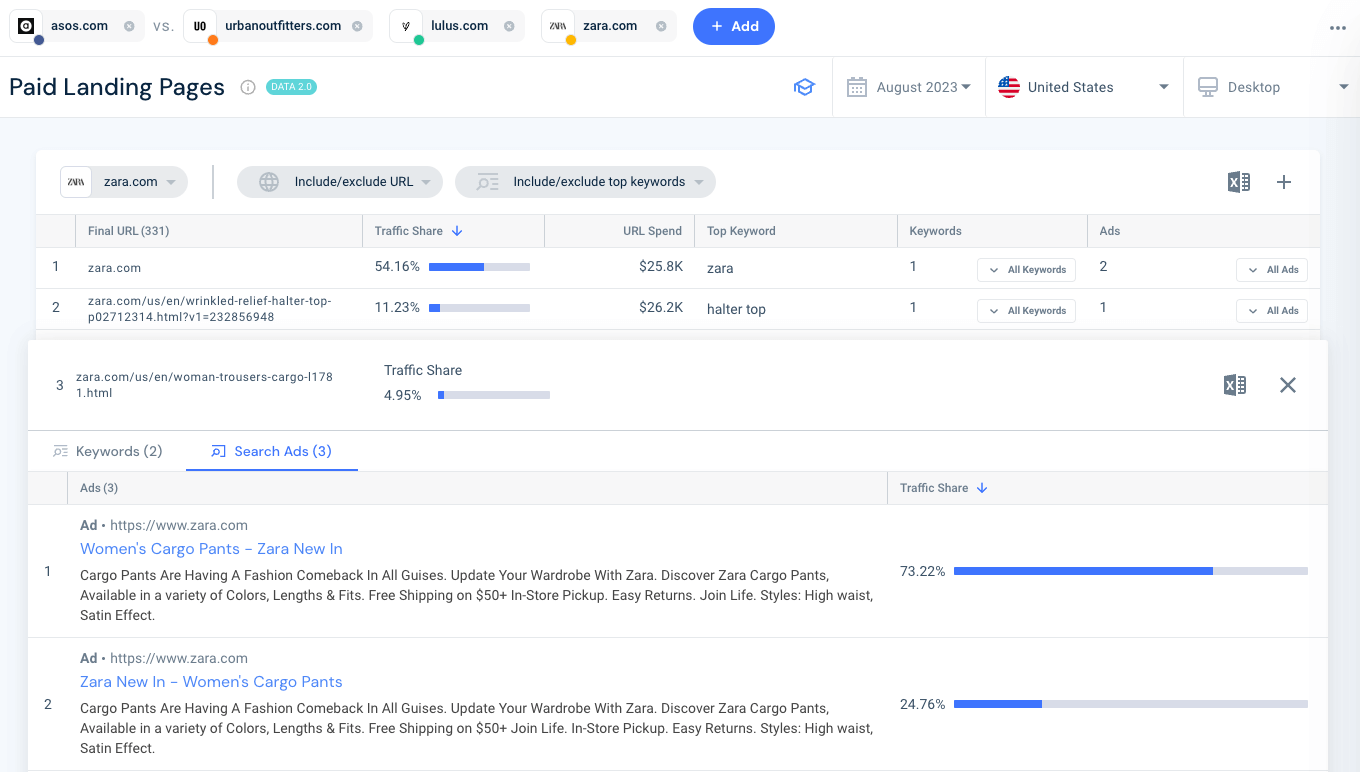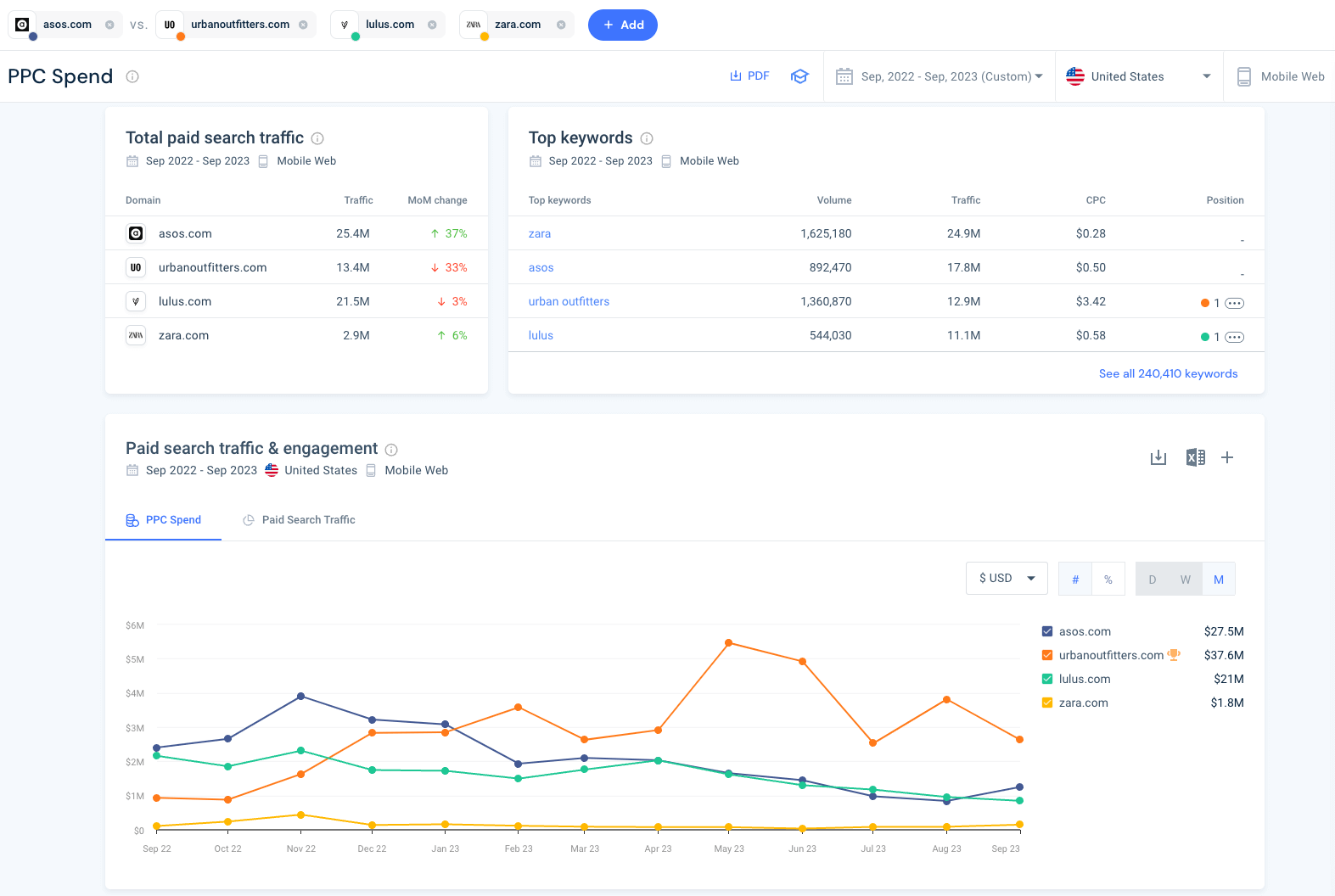PPC Competitive Analysis: A Step-By-Step Guide (+ Checklist)

We all agree PPC ads are pretty great for business. They can boost brand visibility by up to 80%, drive super targeted traffic to your website and generate a ton of leads.
So, naturally, there’s a lot of competition to get your paid ads seen by the right eyes And it’s your PPC competitors that shape the climate in which you do battle.
Your competitors influence pretty much everything in the world of PPC, from what you pay per click to whether your ads actually ever make it into search results.
So, keeping a keen and constant eye on your competitors’ PPC strategies is an absolute must.
In this comprehensive guide to PPC competitive analysis, we’ll give you all the info and tools you need to scrutinize every inch of your competitors’ most successful paid strategies.
What is PPC competitor analysis?
PPC competitor analysis is the process of analyzing the tactics, strategies and performance of your competitors’ PPC efforts.
You peel back the layers of their strategies to find out where they’re getting the most traffic from and spot which tactics lead to greater ad visibility in search results.
Through a PPC analysis, you can gain insight into your competitors’:
- Most lucrative keywords
- Best-performing search ads – and their position in the SERPs
- High-traffic landing pages
- Budget and spend decisions
- Most effective CTAs
The result? You can use this goldmine of information to refine and improve your own PPC strategies to catapult your ads into the spotlight, capture more targeted traffic and skyrocket conversion rates
Why is PPC competitor analysis important?
Well-conducted PPC competitor research is essential to creating a successful paid search strategy as it helps you:
1) Understand the competitive landscape
You can’t just dive straight into Google Ads and start bidding without first knowing who you’re competing with and how your PPC performance measures up.
2) Identify gaps and opportunities
Analyze what your competitors are doing to identify any glaring gaps in your own PPC campaigns. These could be untapped keywords, new and innovative ad copy or effective CTAs that are resulting in a lot of traffic for your competitors.
3) Stay proactive
Spot any new moves by competitors and shifts in your audience’s behavior as quickly as possible, so you can adapt your strategies and stay competitive.
4) Drive more clicks and conversions
Understand what drives the most engagement within your target audience by examining your competitors’ best-performing ads and landing pages.
5) Set achievable goals
With an overview of your competitors’ PPC performance, you can more accurately gauge what is achievable within your industry and set manageable goals for future success.
How to analyze competitors’ PPC strategies
1) Identify your competitors
You probably know your competitors quite well. But, as the low barrier to entry when it comes to paid advertising, the scope of potential rivals is a lot more diverse than any other marketing channel.
That’s why identifying your specific PPC competitors is an important first step of your competitive analysis.
Types of PPC competitors
Direct competitors: These are the competitors you know well. They have a similar product or service and consistently go after the same audience and the same keywords in their paid ads.
Indirect competitors: More subtle competitors that may not sell the same product or service, but appeal to the same target audience – and will still give your ads a run for their money.
Search competitors: Your search competitors are the ones you already come head-to-head with in organic search results for your target keywords. They’ll likely be jostling for the same ad space, too.
Seasonal competitors: A big reason why your PPC competitor analysis needs to be a regular thing. Some businesses only launch paid campaigns at certain times of the year, such as around the holiday season.
Local competitors: These are brands vying for attention within the same geographic region as you, targeting the same audience and local keywords. 92% of searchers pick businesses on the first page of local search results, so don’t forget about your local PPC competitor analysis
Find your PPC competitors
The classic way is to google each of your target keywords to see which ads come up and make a list of competitors that way.
Luckily, there’s a much quicker and easier way to find out who you’re competing against using Similarweb.
The ‘Paid Competitors’ feature highlights your top ten PPC competitors mapped out in a graph:
Once you’ve refined by country and time period, target your analysis further by selecting different metrics (total traffic, paid traffic, shared keywords etc.) to represent the x- and y- axis. This will change the top 10 competitors shown as per the chosen metrics.
Here, you can determine the degree of overlap between you and your competitors, such as the search overlap and percentage of shared keywords.
Understand where they are competing with you
It’s a big ol’ PPC world out there. From search engines like Google and Bing, to social media platforms like Instagram, Linkedin and YouTube, there are several platforms where you can battle to capture clicks from your target audience.
So, pinpointing which platforms you’re competing on with your PPC rivals helps you gain clarity on where to channel your energy and how to tailor your approach for each specific platform.
Decide who not to compete with:
Working out who NOT to compete with can be just as important, as it leads to more efficient allocation of time, effort and of course, budget.
This is especially true when it comes to your branded keywords. You might discover that some brands bidding on your branded keywords aren’t true competitors; they might have a totally different product or service, or their ads may be subpar and getting little traffic.
Plus, if you’ve already secured the top organic spot in search results for a target keyword, competing with paid ads could be a waste as you’re already getting the traffic for free.
2) Analyze your competitors’ keyword strategy
Once you’ve got your PPC competitors nailed, you can start examining everything from their high-traffic keywords and ad copy, to how they spend their budget.
The first step is zero-ing in on your competitors’ paid keyword strategy. And here’s why it’s such an important part of your competitive paid search audit:
Identify gaps
When you see which keywords are driving paid traffic to your competitors’ websites, you’ll find untapped keyword opportunities for your own strategy. There may be some lucrative high-volume keywords or long-tail terms that you’re missing out on.
Budget optimization
Seeing which keywords your competitors prioritize, you can make more informed decisions on where to allocate your budget, so you get the maximum bang for your buck.
Trend spotting
Spotting new keywords in your competitors’ focus can clue you in on rising industry trends, changing search behavior or emerging market segments that could influence the effectiveness of your own ads.
How to find your competitors’ top paid keywords using Similarweb
Add in one or more of your competitors to our Paid Search Overview to get a good look into their paid traffic and top paid keywords:
Then, click through to the full list to analyze their top paid keywords in more detail:
Use the filters to remove competitors’ branded terms or sort the keywords by search volume, traffic, CPC and search intent to get a list of keywords that are proven to drive relevant traffic.
Similarweb also has the option to filter the competitive keyword list by ‘newly discovered’ or ‘trending terms’, so you catch new keyword trends as they emerge.
3) Find paid keyword gaps
Discover even more valuable keywords that your competitors are successfully targeting with Similarweb’s Keyword Gap tool.
Here, you can compare your website along with up to four competitors to see the keyword overlap across all websites:
Underneath the overlap Venn diagram, you’ll find a table full to the brim of the keywords driving traffic to these sites:
Look at the Competitive Traffic Share to see where competitors are getting traffic and you’re not. Then qualify those keyword opportunities by analyzing the traffic, search volume and CPC.
4) Research competitor ads
The next step is finding out what your competitors are saying in their ads to woo your target audience. What’s enticing those short attention spans to stop and click through?
Have a look at your competitors’ ad copy to find out
By taking a peek at their messaging, you’ll see which benefits they’re highlighting, the emotions they’re tapping into, and the calls to action that are actually working.
This is truly golden data as with it you’ll craft ad messaging that stands out, resonates better, and maybe, just maybe, steals the limelight.
Here’s how Similarweb can help you uncover the best ad copy insights:
Under the Paid Website Analysis module, you’ll find our Search Ads tool which allows you to compare your ads with up to four competitors:
With this view, you will see your competitor’s ad copy just as it appears in the SERPs, along with the estimated ad impressions, the top keyword driving traffic to the ad and its average position in search results over the specified month.
Once you’ve picked out the ads that are driving the most traffic, inspect the ad copy and calls-to-action of each to understand why they’re getting so many clicks.
5) Analyze your competitors’ campaign seasonality
Understanding the fluctuations in your competitors’ PPC advertising activities at different times of the year helps you identify patterns or peak periods in which they get more traffic.
You can use this data to understand when in the year your target audience is more likely to purchase and when to bid more aggressively to compete. Or, you can strategically promote your ads when your competitors’ ads are less active, reducing your CPC and exploiting their missed opportunities to gain a competitive edge.
You can use Similarweb’s Paid Traffic Overview to see your competitors’ seasonal PPC trends:
In this example, you’ll see that with these competing retail brands, there’s a notable paid traffic surge in November – most likely due to Black Friday sales and the approaching holiday season. There’s also periods where one competitor is experiencing a rise in paid traffic where others aren’t, and you can investigate whether this is an untapped opportunity for your business.
6) Scrutinize your competitors’ paid traffic
Next, dive into the nitty gritty of your competitors’ paid traffic to glean some more insights into what is driving your target audience to their websites.
Analyze their SERP rankings
Where your competitors rank on search engine results pages (SERPs) offers a window into which keywords they’re prioritizing and succeeding with in their campaigns. Higher rankings naturally equate to more visibility, clicks and opportunities for conversions.
To see which paid keywords are ranking highly for your competitors, you can use Similaweb’s ‘Keywords’ feature. Once you’ve added in your competitors, adjust the filters to focus on paid traffic and either branded or non-branded keywords (or both).
Here, you’ll see details of your competitors’ average paid positions for each keyword over the selected time period:
Analyze competitors’ paid vs organic traffic
Understanding the balance between a competitor’s paid and organic traffic sheds light on where they are getting the most engagement from the target audience.
Aside from helping you contextualize your own performance, this information helps signal where you should focus your efforts based on their successes, or highlight which competitors are missing out on paid traffic opportunities that you can then capitalize on.
Here, the majority of these retail competitors have a pretty even split between organic and paid traffic, suggesting that PPC strategies are just as effective with the shared target audience. In this case, you would know to invest equally in your PPC and SEO strategies to compete for a share of the traffic.
Analyze which countries are driving paid traffic
Analyzing which countries are driving paid traffic to your competitors shows you where in the world your audience is most engaged, giving you a clear roadmap of where to focus your PPC efforts.
When considering breaking into a new market/geography, understanding the competitive paid landscape, CPC and ad strategies of competitors is crucial, as while organic and direct traffic take a while to grow, PPC will lead acquisition efforts.
Analyze competitors’ top-performing landing pages
Getting your audience to click through to your landing page is only half the battle
You’re then faced with the not-so-easy task of keeping them on the landing page long enough to actually convert – whether that’s getting them to make a purchase, book a demo or complete a form.
That’s why looking at your competitors’ best performing landing pages to see how they’re successfully engaging your shared audience is an essential step in your competitive analysis.
Look at their copy and how it’s structured, the layout of the page, any imagery, CTAs or just about anything that could make their page stand out.
For this, you can use Similarweb’s Paid Landing Pages tool, where you enter in up to 4 competitors to get a list of their highest-traffic landing pages:
Then, drill down into each specific URL to see a list of keywords that drive traffic to the landing page:
And see every Search Ad associated with that URL:
Analyze their multi-device strategy
When digital touch-points sprawl across multiple devices – from smartphones and tablets to wearables – a one-size-fits-all approach to PPC simply won’t get you the results you want.
So, knowing which specific devices are driving traffic to your competitors is an important part of your analysis, as it reveals the distinct user behaviors and preferences of your target audience.
With this information, you can go on to create device-specific ad campaigns tailored to your target audiences’ preferences to increase the likelihood of them clicking on your ads.
7) Analyze competitors’ ad spend
Examining your competitors’ PPC spend reveals not just how much they’re investing but where they’re confident to spend. Why is this so important to your competitive analysis?
Get an idea of how much you should be investing in your campaigns to avoid over or under spending
Pinpoint seasonal ad spending trends (as discussed earlier)
See where their investments really paid off
You can dig up these insights using Similarweb’s PPC Spend tool, where you get an overview of competitors’ PPC spend over a selected time period:
To see the success of their spend decisions, switch between the PPC Spend and Paid Search Traffic tabs to compare their monthly ad spend to their paid traffic for the same month.
Track your competitors’ paid activities over time
Carrying out PPC competitive analysis is no one-off operation. User behavior changes, trends come and go and your competitors never stop moving. Ideally, you should perform PPC competitive analysis monthly to stay one step ahead of the competition.
And, we’ve got a way to make big chunks of your PPC monitoring a breeze with our ✨Competitive Tracker ✨
With this feature, you can track up to 25 competitors to get an ongoing overview of their digital performance, key trends, metrics, and new moves in your specific competitive landscape.
While the tool encompasses everything from your competitors’ organic traffic through to their social performance, for the purpose of your PPC competitive analysis, you can focus mainly on the ‘Paid Search’ and ‘Display’ sections.
In your Paid Search overview, you can track your real-time performance in comparison to your competitors and be kept in the loop about any changes in paid traffic. When competitors start gaining traction in a certain area or bidding on the same keywords you can adjust your own strategies quickly:
Keep a close eye on your competitors’ display traffic and their new ad creatives by regularly checking the Display overview:
Protecting your branded keywords
Don’t miss this important part of your PPC surveillance as competitors bidding on your branded keywords can divert traffic that is rightfully yours away from your site.
To make tracking all of your branded keywords in one place easier, there’s Similarweb’s dedicated Brand Protection tool. You’ll be alerted to any aggressive bidding strategies launched by competitors, so you have time to pivot your PPC strategies and keep hold of your traffic.
That’s a wrap
In a world where the PPC competitive landscape is fierce and constantly evolving, staying ahead requires more than just bidding on the right keywords. You’ve got to have an in-depth understanding of your competitors’ strategies, from the keywords they prioritize to the ads and CTAs that compel your target audience to take action.
With our comprehensive guide to PPC competitive analysis, you’ve learned how to uncover everything from your competitors’ paid keyword strategies and seasonal trends to their ad spend secrets and multi-device strategies. You now have everything you need to create a winning paid strategy that will propel your PPC ads into the spotlight.
And all with a little help from Similarweb. With our range of competitive analysis tools and trackers, our platform streamlines the process and offers deep insights into your competitors’ most successful paid keywords, ad creatives, landing pages and much, much more.
FAQS
What is PPC competitor analysis?
PPC competitor analysis is the process of examining your competitors’ paid advertising strategies, tactics, and performance to gain insights into their biggest successes. It involves dissecting their target keyword, ad copy, landing pages, budgets, and calls-to-action to refine and enhance your own PPC strategies.
Why is PPC competitor analysis important?
PPC competitor analysis is crucial because it helps you stay ahead by understanding your competition, identifying opportunities, and optimizing your strategies for better results.
How do I analyze my competitors’ PPC strategies?
To analyze competitors’ PPC strategies, first identify your true PPC rivals, then review their ad copy, keyword strategy, and spend decisions to pinpoint what is driving the most paid traffic.
How can I use Similarweb to conduct a PPC competitive analysis?
Similarweb’s many competitive intelligence tools will streamline the process of a PPC competitive analysis by helping you identify your top PPC competitors, explore competitors’ paid traffic and keywords, examine their ad copy and keep a close eye on competitor activities over time – all in one platform.
The #1 PPC tool - get started
Give it a try or talk to our marketing team — don’t worry, it’s free!
